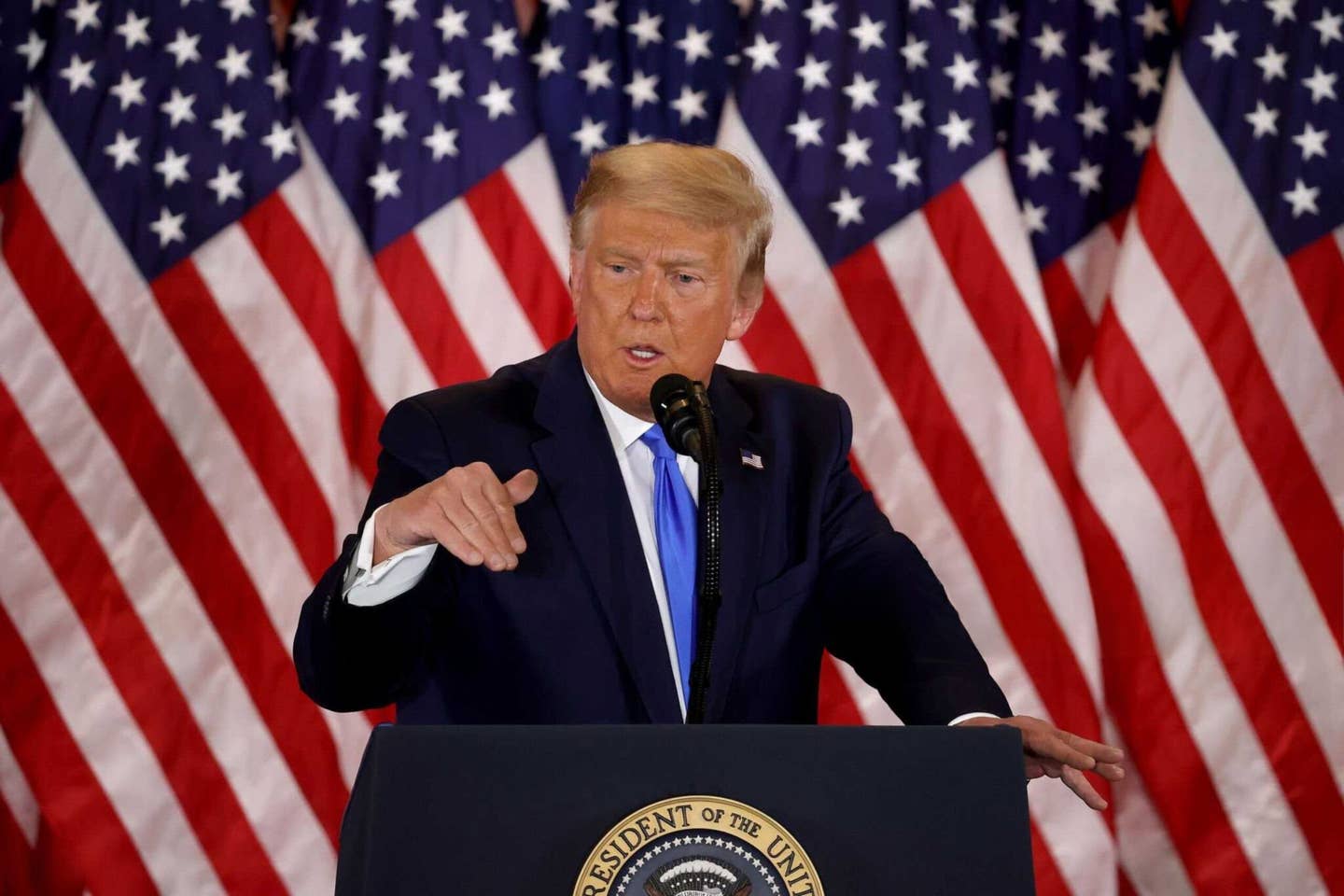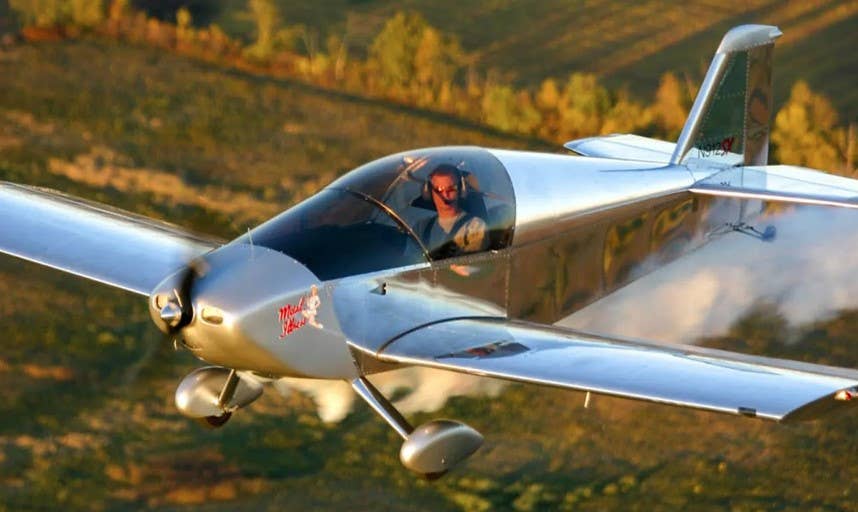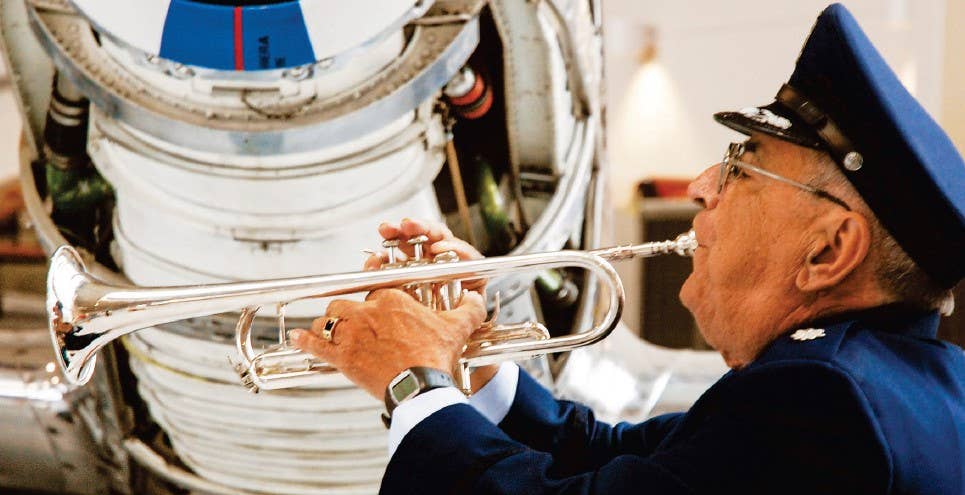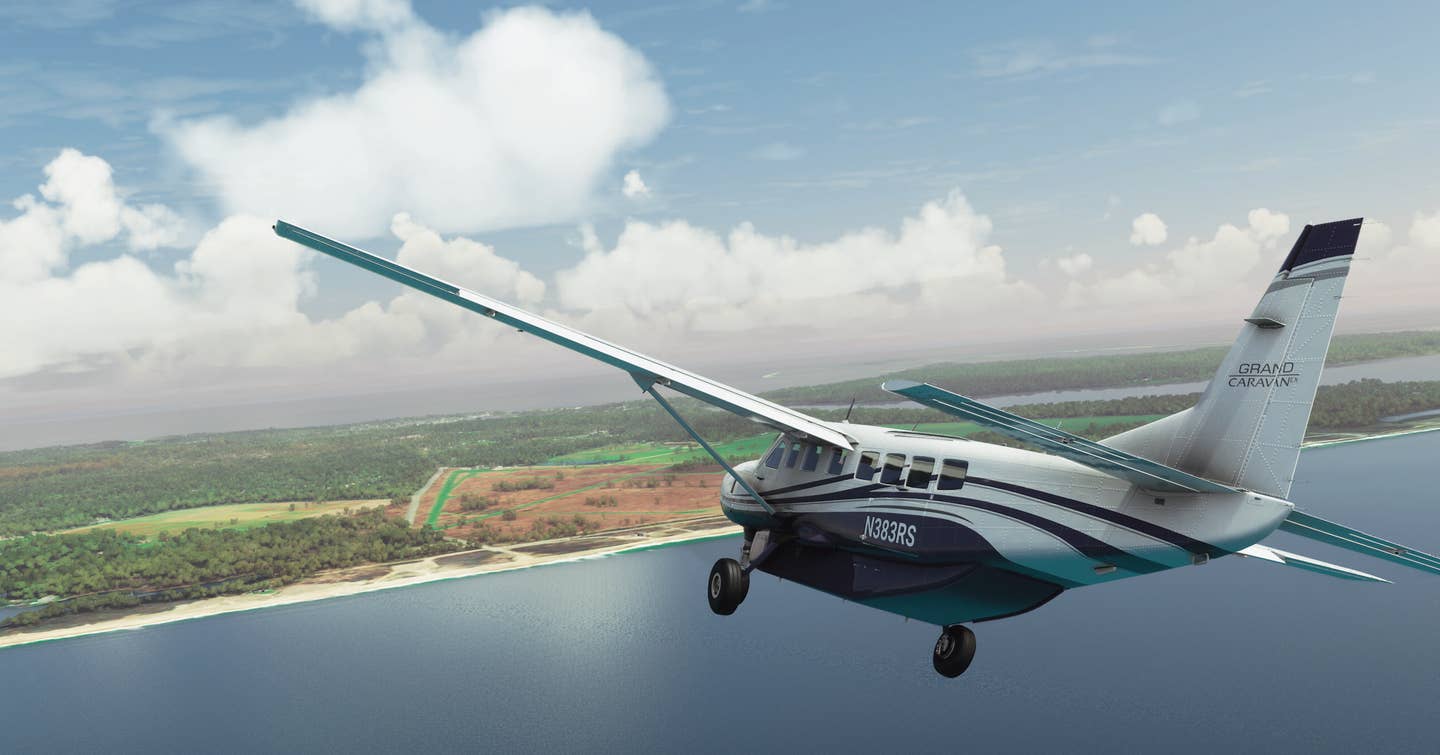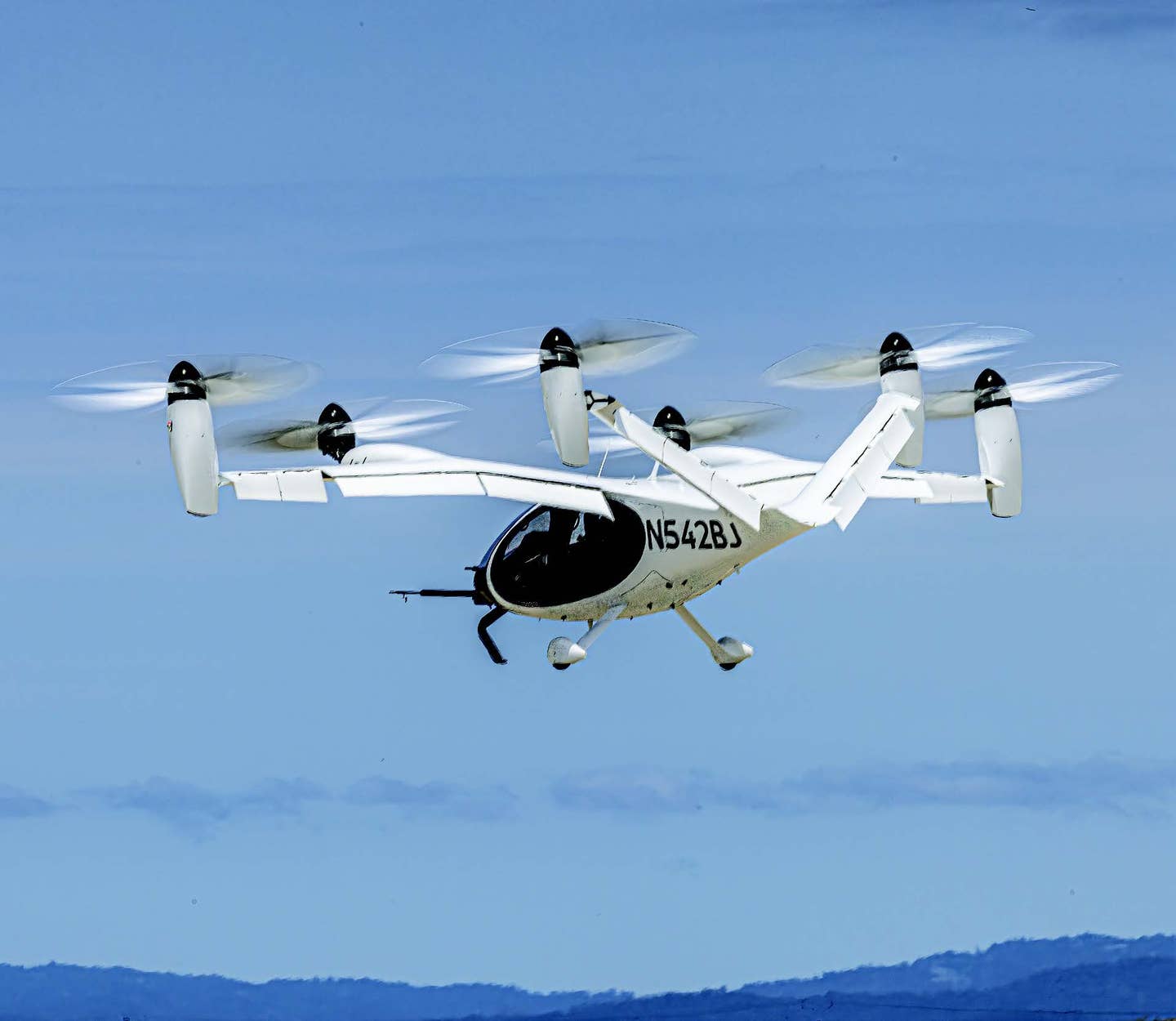All Flight Jackets Tell a Story
Original or tribute, flight jackets are cherished articles.
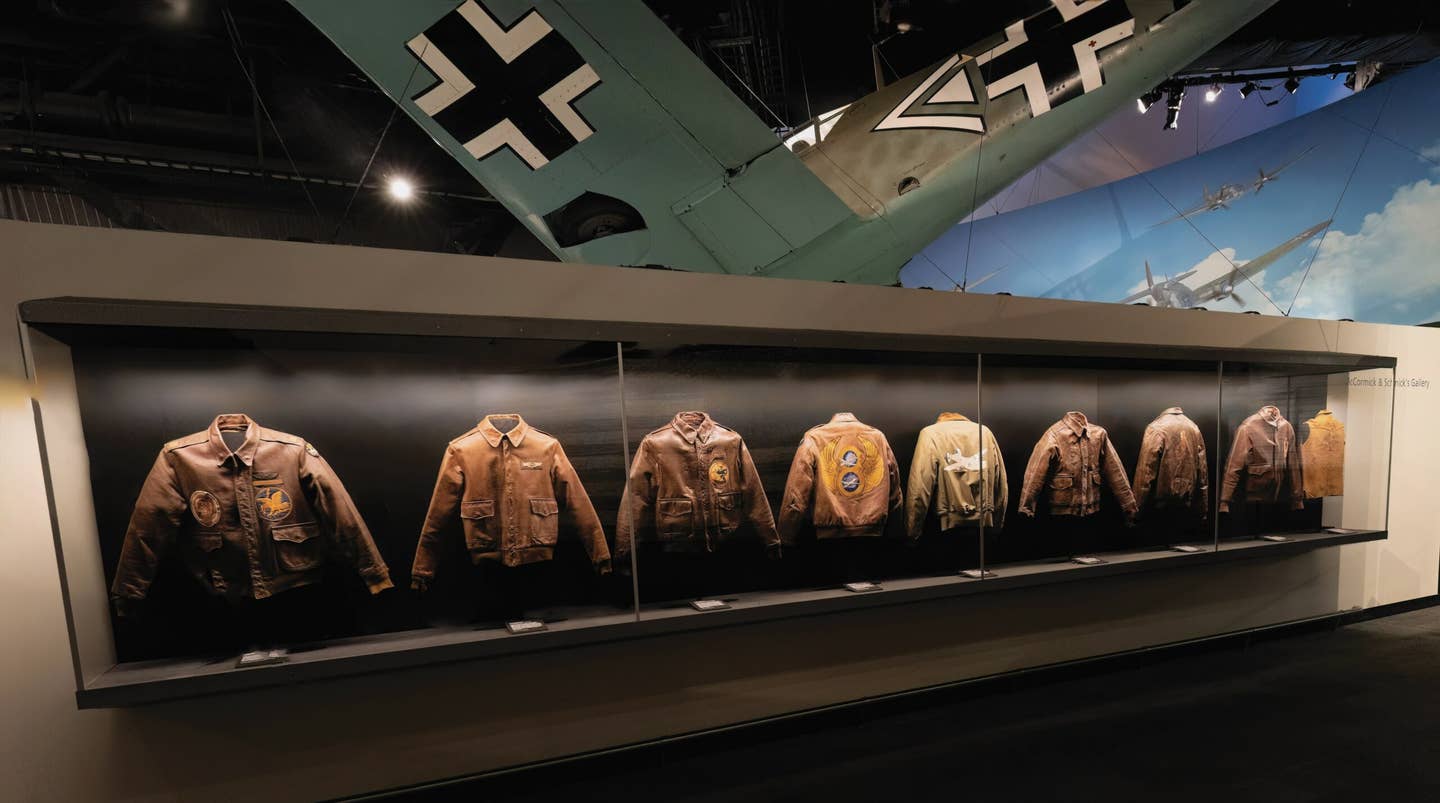
You’ll find a nice collection of vintage flight jackets in the Personal Courage Wing at the Museum of Flight
in Seattle, with several variations, as there were many different styles in use by several manufacturers. The jacket
offers a snapshot into the owner’s life, with hand-painted patches and artwork the norm. [Rebeca Rambal]
Since the early days of aviation, the leather jacket has been fashion de rigueur for pilots. Because leather is windproof, these jackets were a favorite of pilots in open cockpits. By the 1930s the military issued A-2, G-1, and B-3 jackets that were often adorned with and painted squadron patches and the name of the aircraft or unit the owner flew with. Although leather jackets are no longer worn into combat, they are still a large part of pilot culture—and they are prized by collectors of all genres.
Jackets on Display
Aviation museums have become repositories for flight jackets, including one of the most storied, the National Air and Space Museum in Washington, D.C. According to Alex Spencer, curator of European, British, and Commonwealth military aviation, military flight clothing, and memorabilia, the museum boasts 25 flight jackets in its collection, most from World War II and a few from later conflicts and wars.
If you're not already a subscriber, what are you waiting for? Subscribe today to get the issue as soon as it is released in either Print or Digital formats.
Subscribe NowThree of Spencer’s favorites are the A-2s worn by Claire Chennault, Thomas Weems, and Kenneth Williams. Chennault was a U.S. major general who commanded the U.S. Army Air Forces in China during World War II and created the American Volunteer Group (AVG), best known as the “Flying Tigers.” Weems served as a navigator aboard Martin B-26 Marauder Winsockie in the 69th Bombardment Squadron at the Battle of Midway in 1942. Winsockie was one of five B-26s sent to attack the Japanese carrier fleet. Only two of the aircraft returned. Williams was a member of the crew of the B-17 Murder Inc.
“The B-17 was named after a mafia group in New York City in the 1920s and 1930s,” says Spencer. “The guys on the airplane thought it was a good idea. When the airplane was shot down by the Germans, the propaganda arm took the name of the aircraft to show they had ‘absolute proof’ [that] the Americans were terror fliers out to murder civilians. It became an international incident and, when it got back to General Hap Arnold, he ordered a review of all airplane names. Anything to do with murder or killing or such were ordered to be erased and renamed."
Williams was captured and sent to a POW camp.
“He scratched the name of the airplane off the jacket. After the war he had the jacket repainted,” says Spencer, adding that it is not uncommon for the families of the veterans to visit the museum to see a flight jacket that belonged to a relative.
The WASP Jacket
The latest jacket to be placed in the care of the Smithsonian Institute is an A-2 that belonged to Janice Christensen, a member of the Women Airforce Service Pilots (WASP) class of 43-W-5.
According to Dorothy Cochrane, curator for general aviation and aerial photography at the museum, Christensen flew many aircraft, including the B-24, until the WASP program was disbanded in December 1944. After her WASP service, Christensen worked at the U.S.
Airway Traffic Control Center in Chicago and at various weather stations in Ohio, then transitioned to a career in medicine. She continued to fly as a member of the Civil Air Patrol, and in 1949 she joined the Air Force Reserve with the rank of first lieutenant. She received an honorable discharge with the rank of captain on November 7, 1963.
Christensen died in 1965, so she did not live to see the WASP granted veteran status. Her jacket, donated to the museum by her sister, Dagmar Joyce Noll, is scheduled to undergo preservation and restoration before being displayed.
Museum of Flight Jackets
One of the challenges of exhibiting flight jackets is deciding how much history to share, says Matthew Burchette, senior curator at the Museum of Flight in Seattle. The MOF has several jackets on display in the Personal Courage wing that include details of what company made the jacket.
“Not many people realize that there were several manufacturers of A-2s during World War II, ” Burchette says.
Burchette’s favorite jacket on display comes from Richard Jacobson, who was the copilot of the B-17 5 Grand.
“The aircraft was the 5,000th B-17 built since the attack on Pearl Harbor, and nearly every Boeing employee signed it as it rolled off the line,” Burchette says. “Covered in signatures, it flew 78 missions over Germany. I love how the Boeing workers took such great pride in their work that they were willing to sign an object that might not come home. 5 Grand did come home but was scrapped after the war.”
Burchette believes it is important that people realize flight jackets are more than just clothing or protective gear for pilots and crewmembers.
“They are an extension of the planes they flew and took pride in,” he says. “The flight jacket is an item of uniquely American clothing, and the artwork painted on many is even more so. Looking at the jackets on display, it is clear that the owner was proud to wear them. Some show signs of much wear after the war, while others are nearly pristine, showing they were treated with respect and reverence.”
Post-WWII Jacket
Leather flight jackets were still worn up through the Vietnam War. Many military pilots kept their jackets when they separated from the service. Rusty Sachs, a flight instructor for airplanes and rotorcraft, and executive director of the National Association of Flight Instructors (NAFI) from 2004 to 2007, is one of those. Sachs still has the leather jacket issued to him when he was a cadet in the U.S. Marine Corps. He enlisted in 1964 and became a helicopter pilot. According to Sachs, the jacket was handed to him in Pensacola, Florida, in February 1965 upon completion of preflight training.
Sachs, who served in Vietnam, tells the story of an enemy attack that had the soldiers running for cover in the bunker. Sachs left his jacket in the tent. A few weeks after the attack, he noted his jacket “had a few small holes in it made by shrapnel.” He had the jacket relined in 1969 when he entered the Marine Reserve, making the holes more difficult to find. After Sachs separated from the Marines in 1970, the jacket went into the closet but was recently sent out for restoration.
Family Heirlooms, Legacy
John Niehaus, a 5,500-hour airline transport pilot and the director of development for NAFI, wears a jacket that belonged to a Marine helicopter pilot in Vietnam who was a good friend of his uncle.
Niehaus decided on a career in aviation while in high school and received the jacket as a graduation gift.
“The note inside read, ‘I know I haven’t been the uncle you always wanted or needed, but this jacket was earned by my best friend who was a pilot in the military. It served him well, and he left it to me after he passed away. He would have wanted me to pass it on to you. I hope it serves you just as well. Good luck living your dream.’”
Unfortunately, the uncle died before he had the opportunity to share more about his friend. The name “Barthel” is stenciled inside the jacket.
Niehaus says he is very careful about where and how he wears the jacket because he doesn’t want people to assume he served in the military. “I never wanted to misrepresent myself to be something that I am not,” says Niehaus. “When I wear it, people ask questions to which I reply that it is continuing a family legacy of honoring a family friend. The person was special to my uncle as a friend, and…knowing that my uncle parted with something of such high sentimental value as a show of support to me was so incredibly special.”
Someday, the jacket will likely be handed down to Niehaus’ son, who, at age 4, already loves aviation and wears a jacket that looks very much like his father’s.
Receive and Bestow
I have been on both sides of the heirloom equation. In my collection, I have jackets given to me by gentlemen who will never be a size 40 again but who want theirs to be appreciated and occasionally worn on “military days of remembrance and obligation.” A recent acquisition is a pre-WWII A-2 that belonged to Captain Jack L. Martin, U.S. Army Air Forces pilot and father-in-law of Anne Palmer Martin, a college friend and my chosen family. Captain Martin went West in 1970 decades before his son Robert married Anne Palmer.
We’re still trying to determine what Captain Martin did in the war. We’ve been able to figure out that the patch on the jacket is the early version of the 760th Bombardment Squadron, but we don’t know if Martin went overseas. We do know after the war he flew for Flying Tiger airlines.
Recently, I gifted my first flight jacket, a 1980s era distressed leather A-2, to my niece Sophie Keene. My aviation and journalism careers began concurrently. My first “big paycheck” was used for flying lessons and the purchase of the jacket from the Smithsonian catalog. Top Gun had been released, and leather jackets were in style, worn by reporters in the Persian Gulf War. I was known in that small market as “the reporter who flies.” A few years later when I decided to make aviation a career, I upgraded to a new A-2, putting the distressed one into the closet. The day Sophie was born, I packed away the jacket for safekeeping. The jacket was gifted to her for her 18th birthday.
Since we are an aviation family, Sophie grew up hearing stories about my flying adventures and about grandma Kay (my Mom), who took flying lessons during WWII and loved the P-38 Lighting. I am hopeful Sophie values the jacket as more than a fashion statement.
Tribute Jackets
Most vintage jackets are too valuable and fragile to wear every day, but if you are set on sporting a piece of history, consider a replica often known as a “tribute jacket.” Kevin Wisniewski, a skilled artist from Milwaukee has been painting these jackets since 1987. According to Wisniewski, tribute jackets are often designs commissioned by someone to honor a person or commemorate an event.
For replica jackets, he often works off photographs because the original jacket has long since disappeared. Pinup girls are popular.
“They painted these on their jackets and aircraft as good luck, reminding them of what they were fighting for back home,” says Wisniewski. “We have to remember these were young boys in their late teens and early 20s who, if not for the war, would be courting these women and planning futures. Other paintings of aircraft or cartoon characters depicting giving the enemy what they had coming were also a morale booster.”
He has two favorite reproduced jackets.
“One…I painted a while back with the likeness of my wife, Beth, in a classic period ‘nose art’ pose as was on an original aircraft, Bottom's Up! The other is a jacket that was given to me by a fellow reenactor and friend, George Bruckert’s estate. He had painted it himself quite well and very authentically. He passed from cancer way too young, and I think of him when I see it.”
Wisniewski uses only hand brushes and brush-texture techniques.
“This is how they were done during the war,” he says. “Airbrushing is a bad word in my dictionary. One modern improvement is that I use acrylic leather dyes that, unlike original acrylics, won’t crack over time or chip off.”
Another Kind of Tribute
The A-2 that I wear today falls under the heading of a “tribute jacket,” but instead of paint, it has patches to honor a person and commemorate an event. The first patch was Fifinella, the mascot of the WASPs, and a gift from Florence Shutsy Reynolds, WASP class of 44-W-5. The next patch is from the “Lost Squadron” P-38 Glacier Girl, gracing the jacket to honor Mom and cover a hole I acquired when I rescued a kitten from a tree. There also are multiple patches for my mentors. For Dean Boyd, the man who made an instructor out of me, I display the 8th Air Force. Boyd enlisted at the age of 17 and made a career of it.
There is also the Tico Tiger from the USS Ticonderoga in honor of aviation journalist and retired naval aviator Captain Thomas F. Norton, who flew off the carrier during Vietnam and taught nuggets to fly. There are patches from Lockheed to honor Dad, as well as ones for every B-17 I have been aboard: Memphis Belle, Texas Raiders, Yankee Lady, and Nine-O-Nine. And there are patches for Red Tails and Hemlock Films, which continues to share the stories of vintage aviation.
Aviation education is marked with a patch from the Society of Aviation Flight Educators, as I am a founding member of the group, and it was from it that I earned the master CFI designation several times over. On one pocket there is a vintage Moffett Field (KNUQ) patch to commemorate attending Zeppelin NT school in California in 2009. We are also an airship family, and putting that patch on was a must. I have found the jacket to be an excellent conversation starter. It encourages people to share their aviation stories with me. And I gladly listen.
Protecting Your Jacket
No matter how old the jacket is, if it means something to you, it’s valuable.
Protect it by nourishing it with professional leather care products. You can get these from shoe repair stores. If it is an heirloom, consider storing the jacket flat in a box or footlocker. It will last you a lifetime or more.
If you intend to sell it, have the jacket appraised by a reputable dealer. Authentic World War II jackets in good condition can fetch $1,500 or more.
If you want to buy one, modern flight jackets are not cheap. Expect to pay close to $300 or more for a basic A-2 and as high as $2,000 for an RAF bomber jacket. Beware of scammers who claim to have new authentic A-2 and shearling-lined RAF jackets for ridiculously low prices (less than $200). They may have the design of the jacket, but the materials are subpar. Instead of leather with a sheepskin lining, it looks more like someone tore up a faux leather couch and skinned a muppet.
Save your money and go for the real deal.
Where to find vintage? Prowl swap meets and even garage and estate sales near military bases.
This feature first appeared in the November 2023/Issue 943 of FLYING’s print edition.

Sign-up for newsletters & special offers!
Get the latest FLYING stories & special offers delivered directly to your inbox


